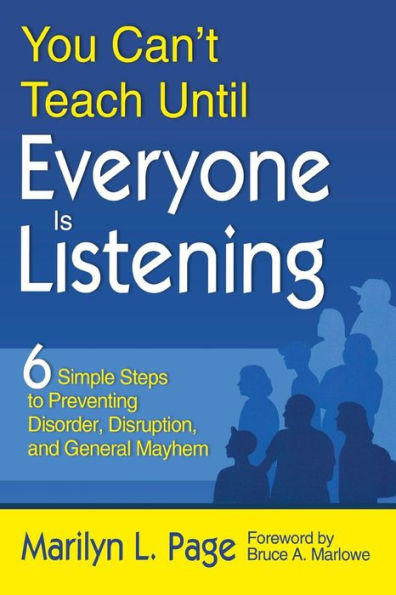5
1
9781412960151



You Can't Teach Until Everyone Is Listening: Six Simple Steps to Preventing Disorder, Disruption, and General Mayhem / Edition 1 available in Hardcover, Paperback, eBook

You Can't Teach Until Everyone Is Listening: Six Simple Steps to Preventing Disorder, Disruption, and General Mayhem / Edition 1
- ISBN-10:
- 1412960150
- ISBN-13:
- 9781412960151
- Pub. Date:
- 05/08/2008
- Publisher:
- SAGE Publications
- ISBN-10:
- 1412960150
- ISBN-13:
- 9781412960151
- Pub. Date:
- 05/08/2008
- Publisher:
- SAGE Publications

You Can't Teach Until Everyone Is Listening: Six Simple Steps to Preventing Disorder, Disruption, and General Mayhem / Edition 1
$30.95
30.95
In Stock

Product Details
| ISBN-13: | 9781412960151 |
|---|---|
| Publisher: | SAGE Publications |
| Publication date: | 05/08/2008 |
| Edition description: | New Edition |
| Pages: | 168 |
| Sales rank: | 1,138,774 |
| Product dimensions: | 6.00(w) x 8.80(h) x 0.70(d) |
| Age Range: | 3 Months |
About the Author
From the B&N Reads Blog



